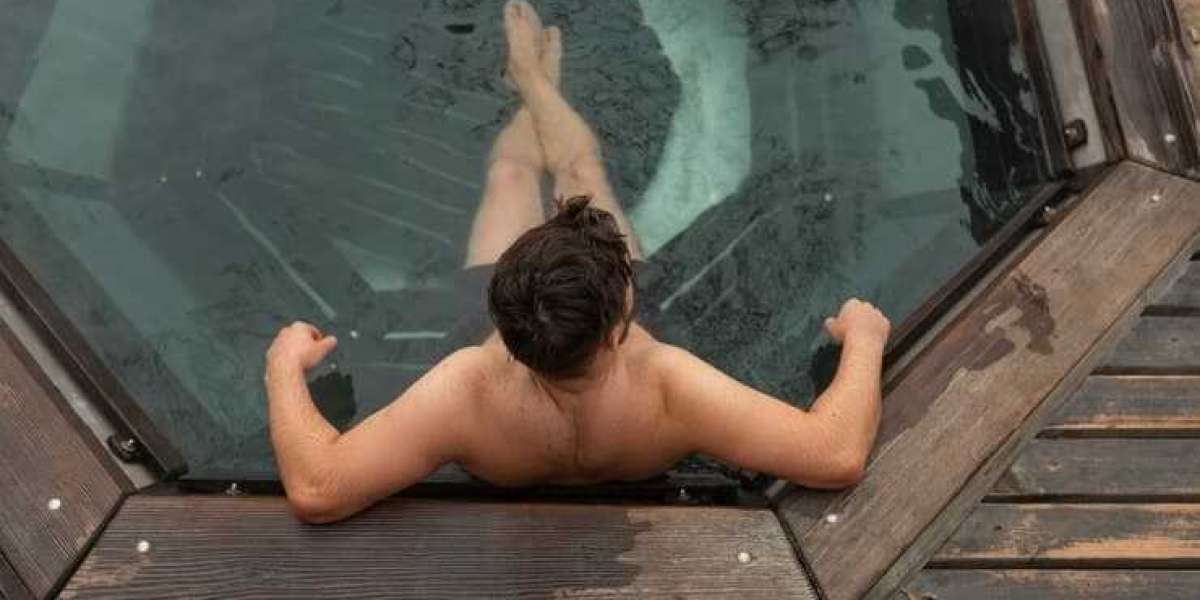In recent years, cold plunge therapy has gained considerable attention as a potent method for enhancing physical recovery and overall well-being. This therapeutic practice involves immersing the body in cold water to stimulate various physiological responses that contribute to improved circulation and reduced inflammation. As more individuals seek natural and effective ways to boost their health, cold plunge therapy has emerged as a viable option for athletes and wellness enthusiasts alike.
Understanding Cold Plunge Therapy
At its core, cold plunge therapy is a form of cryotherapy that leverages the benefits of cold exposure. Traditionally, this practice has been used for centuries in various cultures, often associated with natural hot springs and ice baths. The concept behind cold plunge therapy is relatively simple: by exposing the body to cold temperatures, users can trigger a cascade of physiological reactions that promote healing and recovery.
When an individual immerses themselves in cold water, the body responds by constricting blood vessels, which reduces blood flow to the extremities. This process, known as vasoconstriction, helps to minimize inflammation and swelling. However, once the body is removed from the cold environment, a process called vasodilation occurs, where blood vessels widen, increasing blood flow back to the muscles and tissues. This cycle of constriction and dilation enhances circulation, delivering essential nutrients and oxygen to the tissues, thereby promoting faster recovery and healing.
The Benefits of Cold Plunge Therapy
Cold plunge therapy offers a myriad of benefits that extend beyond immediate physical recovery. One of the most significant advantages is its ability to reduce inflammation, a common issue faced by individuals engaged in physical activities or those dealing with chronic pain conditions. Inflammation is the body’s natural response to injury or stress; however, excessive inflammation can lead to discomfort and hinder performance. By utilizing cold plunge therapy, individuals can effectively manage and reduce inflammation, allowing for improved mobility and less pain.
Moreover, cold exposure has been shown to alleviate muscle soreness. After intense workouts, athletes often experience delayed onset muscle soreness (DOMS), which can impede their training schedule. Cold plunge therapy can significantly help lessen the severity of DOMS by reducing muscle swelling and soreness, enabling athletes to recover more quickly and return to their training regimens.
In addition to physical benefits, cold plunge therapy has been linked to mental health improvements. Cold exposure can stimulate the release of endorphins and other neurotransmitters that contribute to feelings of happiness and well-being. This mental boost can be particularly beneficial for individuals struggling with anxiety or stress. The invigorating sensation of cold water can also provide a refreshing escape from daily pressures, promoting a sense of clarity and focus.
How to Safely Practice Cold Plunge Therapy
While the benefits of cold plunge therapy are compelling, it is crucial to approach the practice safely. Individuals interested in cold exposure should start gradually, especially if they are new to this type of therapy. A common recommendation is to begin with shorter immersion times, perhaps starting with 1-2 minutes, and gradually increasing the duration as the body becomes accustomed to the cold.
The temperature of the water is another consideration. While some may prefer extremely cold temperatures, around 50°F (10°C) or lower, others may find a slightly warmer temperature more tolerable. It is essential to find a temperature that is effective yet comfortable, as excessively cold water can lead to shock or discomfort.
In addition, individuals with specific health conditions, such as cardiovascular problems, asthma, or Raynaud's disease, should consult with a healthcare professional before engaging in cold plunge therapy. Understanding one's body and its reactions to cold exposure is vital for a safe and beneficial experience.
Incorporating Cold Plunge Therapy into Your Routine
For those looking to incorporate cold plunge therapy into their wellness regimen, there are various options available. Some individuals may choose to utilize cold plunge tubs, which are specifically designed for this type of therapy and can be installed at home or gym facilities. Others may opt for natural bodies of water, such as lakes or rivers, during colder months, provided that safety precautions are in place.
Timing is also an important factor to consider when integrating cold plunge therapy into a routine. Many athletes find it beneficial to use cold exposure after workouts to mitigate soreness and enhance recovery. Others may prefer morning sessions to invigorate their bodies and minds, setting a positive tone for the day ahead. Ultimately, the timing should align with personal preferences and lifestyle.
Combining cold plunge therapy with other recovery methods can further amplify its benefits. Incorporating practices such as foam rolling, stretching, or contrast baths (alternating between hot and cold water) can create a comprehensive recovery strategy. This holistic approach will not only address inflammation but also enhance overall physical performance and well-being.
The Science Behind Cold Plunge Therapy
Research continues to explore the physiological effects of cold exposure on the body. Studies have indicated that cold plunge therapy can lead to a significant reduction in markers of inflammation, such as cytokines. These inflammatory markers are often elevated following intense exercise or injury, and their reduction can facilitate enhanced recovery and improved performance.
Furthermore, cold exposure has been shown to increase metabolic rate as the body works to maintain its core temperature. This increase in metabolism can aid in weight management and fat loss as the body burns more calories to generate heat. This aspect of cold plunge therapy adds another layer of appeal for those looking to enhance their fitness journey.
Conclusion
In summary, cold plunge therapy stands out as a powerful tool for boosting circulation and reducing inflammation. Its ability to enhance recovery, alleviate muscle soreness, and provide mental health benefits makes it a popular choice among athletes and wellness seekers alike. However, as with any therapeutic practice, it is essential to approach cold plunge therapy with care and awareness, ensuring safety and effectiveness.
As individuals explore the potential of cold plunge therapy, it is crucial to integrate it thoughtfully into their routines. For those ready to experience the invigorating benefits of cold exposure, look no further than Prime Recovery. Discover high-quality cold plunge solutions designed to elevate your wellness journey. Start your experience today and unlock the full potential of your recovery!







